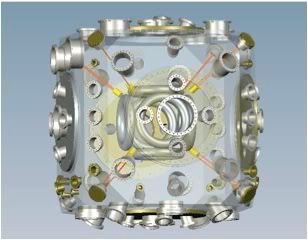A private company in Foothill Ranch that is reportedly experimenting with nuclear fusion power has raised $50 million in funding, according to a report from Socaltech.com.Well not exactly stealth. I reported on the work of Rostoker and Monkton in additions to something I first posted in November of 2007. Still, the fact that they are either getting new money or a release of promised money is good news. The more different ideas we explore on the way to practical fusion the sooner we will reach that goal. Because this is an experimental field. And as Einstein once said, "If we knew what it was we were doing, it would not be called research, would it?"
Little more information was available Monday about the experiments at the company, Tri-Alpha Energy, or the funding itself. In the past, Socaltech reported, Tri-Alpha has received funding from Goldman Sachs, Venrock, Vulcan Capital and New Enterprise Associates.
Tri-Alpha's experiments, based on the work of UC Irvine plasma physics professor Norman Rostoker, have been rumored for years, but the company has not revealed the nature of its experiments to the public.
Solcaltech calls it a "stealth developer of advanced plasma fusion technology.
Tri-Alpha Energy, Polywell Fusion, and Dense Plasma Focus are all working on the holy grail of fusion physics. The combining of Hydrogen (a proton when ionized) and Boron 11 which is a fusion reaction that gives off very few neutrons and whose reaction product is high energy (relatively) charged particles which would allow converting the resultant energy directly to electricity. This greatly lowers the cost of a power plant. Consider that for a fission (currently Uranium) power plant 80% of the cost is in the steam plant which is used to convert the heat output of the reactor into electricity or shaft horsepower in the case of a ship.
One other point. Consider the millions being spent on these fusion experiments with the billions being spent on ITER which is currently in big financial trouble. The reported fix is to steal money from small research projects in other disciplines.
Of course I like Polywell Fusion. You can learn the basics of fusion energy by reading Principles of Fusion Energy: An Introduction to Fusion Energy for Students of Science and Engineering
Polywell is a little more complicated. You can learn more about Polywell and its potential at: Bussard's IEC Fusion Technology (Polywell Fusion) Explained
And the best part about Polywell? We Will Know In Two Years or less.





